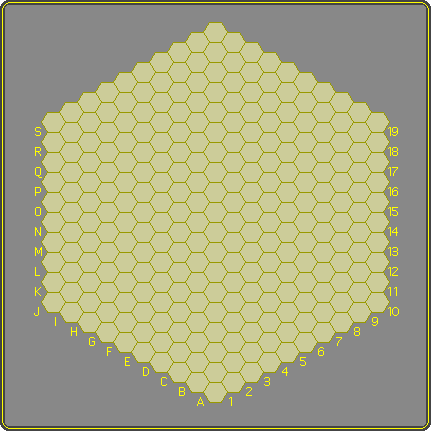Page 3 of 3
|
Bridgeframes Unlike sides, corners are mutually exclusive, so the options for making a bridge are limited to begin with. A frame requires that the two corners involved are occupied before the frame is established, lest the opponent might refute the plan by snatching away one corner. This means investing in moves whose efficiency is granted only in a narrow context, inviting the opponent cut and render them useless. Because of these properties, the bridge, like the ring, is mainly a tactical weapon. Cornerpoints, apart from their inherent danger as part of a bridge, play an important role in joseki (corner disputes) because they form a connection between two sides. Three stones can add up to two sides and a corner, and if a chain containing such a triplet comes out in the open, it may connect up successfully almost anywhere. Forkframes There's a major difference between the fork and the other two winning structures:
The example shows the same 5-stone frame twice. In the basic tactics section is illustrated why it is a frame: black can cut on f4 but after e2 further cutting attempts will push white straight into victory. Black therefore should leave white alone! Let's assume he has a frame elsewhere on the board, of approximately equal speed, so that the game turns into a race. The question of course is: Just exactly how fast is white? The answer is: the number of moves needed to complete the fork, minus the number of black stones white can draw into the position with moves that
The sequence at the top shows one of the many scenarios to do it in 16 moves, drawing 6 replies by ring threats. That's 10 moves. Black sente moves are indicated by the move counter, but do not appear on the board: they're supposed to take place elsewhere without influencing the situation at hand. Of course this is not the final answer to the origial question. An alternative is displayed on the other side, starting from the same situation. This low route has a resource to do it in 8 moves, as shown at the bottom. White makes 20 moves, 12 of which require a local answer because they constitute a ring threat. This is what the race stage often about: the one extra tempo you can squeeze out of a position using tactical threats. | ||||||



